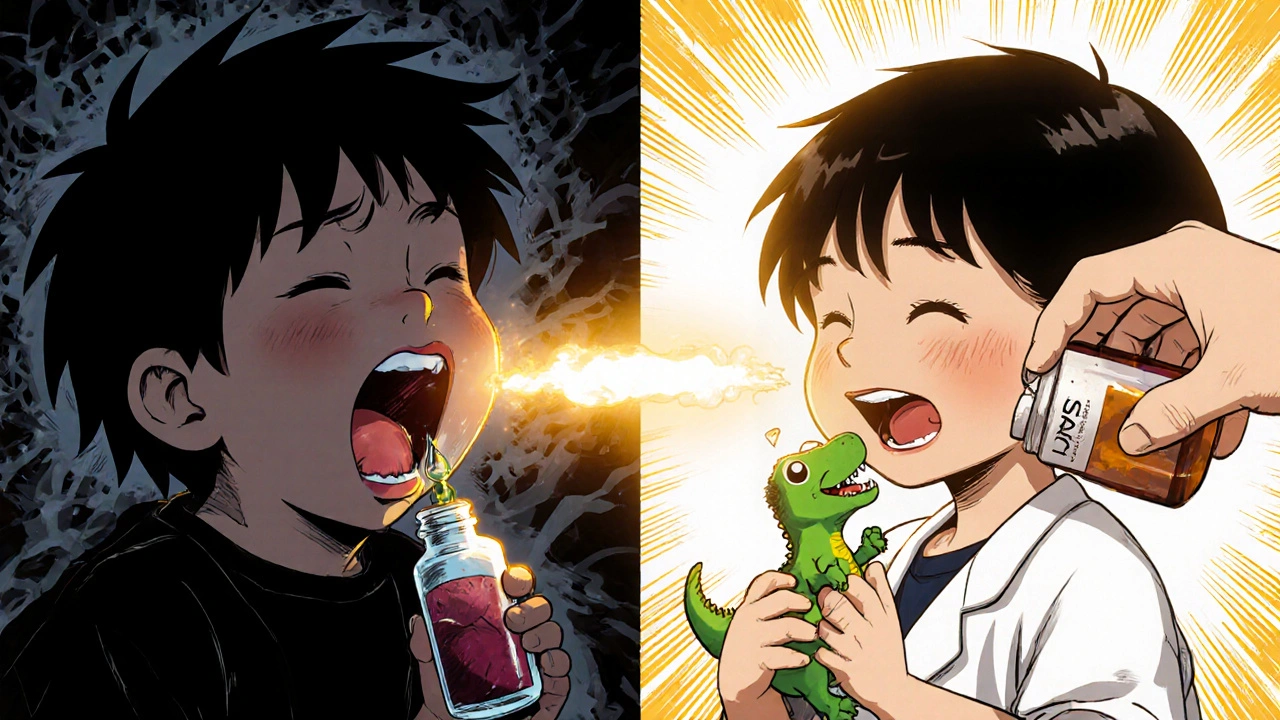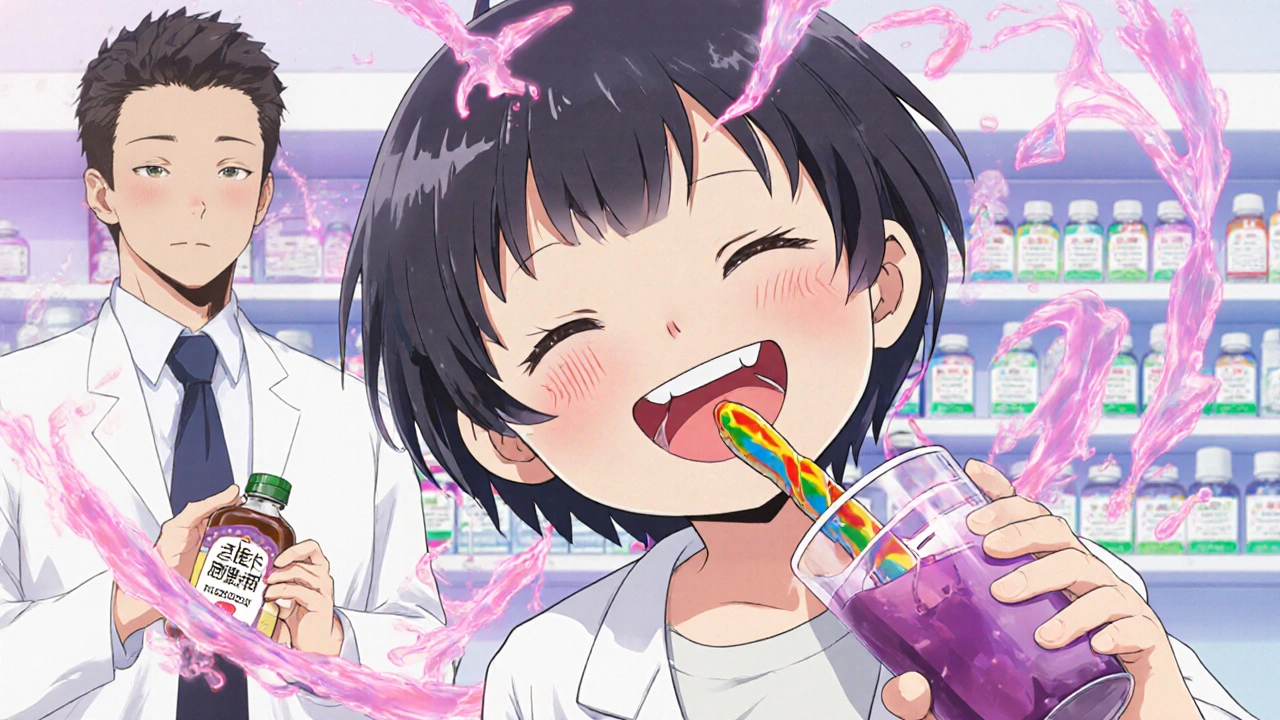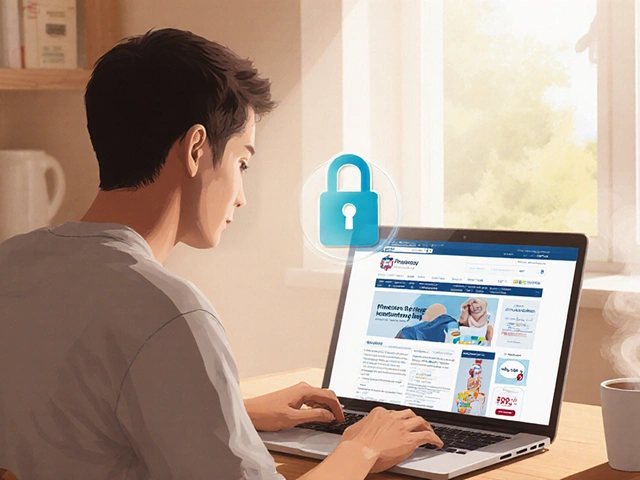Imagine your child spitting out medicine every time you try to give it to them. You’ve tried mixing it with juice, hiding it in applesauce, even bribing them with candy-but nothing works. The medicine isn’t working because your child isn’t taking it. This isn’t just frustrating-it’s dangerous. Up to 76% of children don’t take their prescribed liquid medications as directed, and the biggest reason? Bad taste.
Why Taste Matters More Than You Think
Pediatric medications aren’t designed for enjoyment. They’re designed for effectiveness. But that doesn’t mean they have to taste like chemical regret. Many antibiotics, antifungals, and antivirals used in kids are bitter, metallic, or burn the throat. Studies show that over half of all pediatric medication non-adherence is directly tied to how the medicine tastes. A child doesn’t understand why they need to swallow something that makes them gag. All they know is: this hurts, and I don’t want it. The consequences aren’t small. Missed doses lead to longer illnesses, antibiotic resistance, emergency visits, and even hospitalizations. The FDA calls taste a key factor in successful therapeutic intervention. And yet, for decades, the solution was left to parents-mixing meds with food, using syringes like a battle tactic, or giving up altogether.What Flavoring Services Actually Do
Flavoring services aren’t magic. They’re pharmacy compounding done right. A trained pharmacist takes your child’s liquid prescription-whether it’s amoxicillin, azithromycin, or cefdinir-and adds a safe, dye-free, sugar-free flavoring agent directly into the bottle. No dilution. No change in dosage. No risk to the drug’s effectiveness. Just better taste. The most common medications that get flavored? Augmentin, Amoxicillin, Azithromycin, Cefdinir, and Clindamycin. The top flavors? Grape, bubblegum, strawberry, watermelon, and cherry. Not because they’re trendy, but because research shows kids consistently pick these over others. One study found that when flavoring was added, non-compliance dropped from 76% to just 20%. Another reported compliance jumping from 53% to over 90%. This isn’t a gimmick. It’s a clinical intervention. At Intermountain Healthcare, pharmacists started offering FLAVORx in 2023. It costs $1.50 per prescription. The time it takes? One to two minutes. The impact? Parents stop crying. Kids stop screaming. And medications actually work.How It Works in Real Pharmacies
The process is simple. You bring in your child’s prescription. The pharmacist asks: “What flavor would your child like?” They have a small card or display with five to ten kid-friendly options. You pick. They add the flavoring. Done. Pharmacists don’t guess which flavor works best. They follow guidelines. FLAVORx and other systems provide databases that match specific medications with proven flavor combinations. For example, grape masks the bitterness of amoxicillin better than orange. Bubblegum works well for liquid antifungals. Some combinations don’t work-like certain syrups that thicken too much when mixed. That’s why it’s done by a pharmacist, not a parent. Germantown Pharmacy in Mississippi says letting kids choose their own flavor gives them a sense of control. One parent told them: “My child actually asks for his medicine now that it tastes like bubblegum.” That’s not just compliance-that’s empowerment.
Why Home Hacks Fail
You’ve probably tried mixing medicine with juice, yogurt, or chocolate syrup. It seems logical. But here’s the problem: you don’t know if the medicine is still working. Some drugs interact with food. Others become less effective when diluted. Some lose potency when mixed with acidic juices like orange. A study found that 78% of pediatric medication struggles were linked to taste-and half of those parents tried hiding it in food. That’s a high risk for low reward. Flavoring services avoid all that. The flavoring agent is added directly to the original formulation. The concentration stays the same. The absorption rate stays the same. The dose stays accurate. The pharmacy keeps a record. No guesswork.What’s Not Covered
Flavoring isn’t a cure-all. It doesn’t fix every adherence problem. Some kids have sensory issues that make them reject any liquid, no matter how sweet. Others have allergies to certain flavoring ingredients (though most systems are allergen-free). And some medications-especially those in tablet or suspension form-can’t be flavored at all. In those cases, alternatives exist. Chewable tablets, orally disintegrating tablets, or prepackaged doses can be better options. One African study showed 91% compliance with prepacked tablets versus only 42% with liquid formulations for antimalarials in young children. So if flavoring doesn’t work, talk to your doctor about switching formulations.
The Bigger Picture
This isn’t just about taste. It’s about dignity. It’s about reducing stress for families. It’s about making healthcare work for children, not against them. Pediatricians like Dr. Laura Tully call flavoring a quick and simple service that fixes a problem no one talks about enough. Pharmacists are on the front lines. They’re the ones who see the tears, the tantrums, the refusal to take meds. They’re the ones who can change that in two minutes. And the data backs it up. When pharmacies offer flavoring, parents are more likely to return. They recommend the pharmacy to friends. They trust the care more. One study found that customers who used flavoring services were far more likely to choose that pharmacy again-and tell others to do the same.What Parents Should Do
If your child is struggling with liquid medication:- Ask your pharmacist if they offer flavoring services. Don’t assume they do.
- Bring the prescription in early. Some flavors take a few minutes to mix.
- Let your child pick the flavor. Even toddlers can point to a picture.
- Don’t try to mix it yourself. It could make things worse.
- If flavoring doesn’t help, ask about alternative formulations-tablets, dissolvable strips, or suspensions.
What the Future Holds
The demand for better-tasting pediatric meds is growing. Companies like Pfizer are investing in next-generation taste-masking tech-not just flavoring, but molecular solutions that block bitterness at the source. The FDA is paying more attention. More health systems are adopting flavoring as standard care. But right now, the simplest, cheapest, most proven tool is already here: a pharmacist, a bottle, and a choice of grape or bubblegum. It’s not glamorous. But it works.Can any liquid medication be flavored?
Most liquid medications can be flavored, but not all. Some formulations may change in viscosity or stability when flavoring agents are added. Pharmacists use manufacturer guidelines and databases to determine compatibility. Medications like certain suspensions or those with specific pH requirements may not be suitable. Always let a pharmacist evaluate the prescription before flavoring.
Is flavored medication safe for kids with allergies?
Yes, most commercial flavoring services like FLAVORx use dye-free, sugar-free, and allergen-free ingredients. They avoid common allergens like nuts, dairy, soy, and gluten. Always confirm with the pharmacist that the specific flavoring agent is safe for your child’s known allergies.
How much does flavoring cost?
Costs vary by pharmacy and location, but in many U.S. community pharmacies, it’s around $1.50 per prescription. Some pharmacies include it for free as part of patient care. It’s rarely covered by insurance, but the low cost makes it accessible to most families.
Do children really prefer certain flavors?
Yes. Studies show grape, bubblegum, strawberry, watermelon, and cherry are the most popular among children. These flavors consistently rank highest in taste tests and correlate with higher adherence rates. Younger children often prefer bubblegum or watermelon, while older kids may lean toward grape or strawberry.
Can flavoring make my child addicted to sweet tastes?
No. The flavoring agents used are not sweeteners in the traditional sense-they’re taste-masking compounds designed to cover bitterness, not add sugar. Most are sugar-free and contain no calories. There’s no evidence that occasional use leads to long-term preferences for sugary foods. The goal is to make medicine tolerable, not to create a dessert.
What if my child hates the flavor I picked?
Most pharmacies will allow you to try a different flavor on the next prescription. Some even let you mix two flavors together. If your child consistently rejects a flavor, talk to your pharmacist-they can suggest alternatives based on what’s worked for other kids with the same medication.







